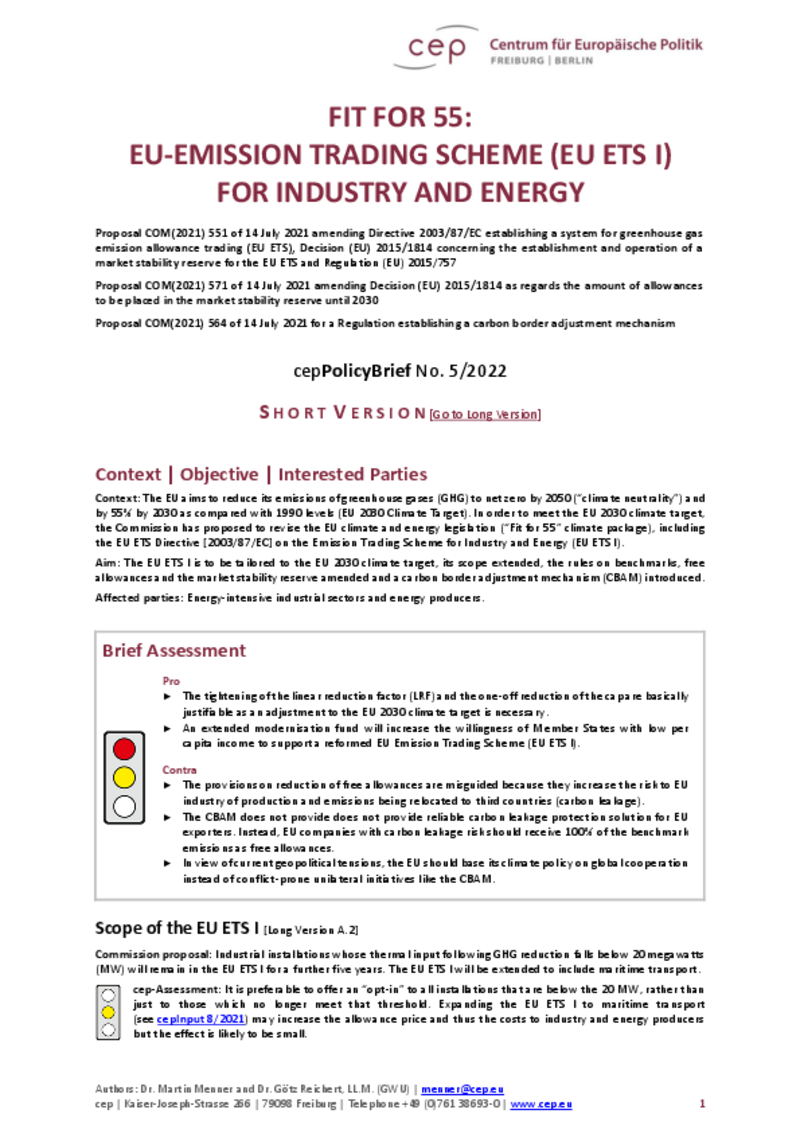
Energy
Fit for 55: EU-Emission Trading Scheme (EU ETS I) for Industry and Energy
cepPolicyBrief
"Requirements to reduce the number of free allowances do not achieve their goals. They increase the risk of EU industry relocating production and emissions to third countries, so-called carbon leakage," warns cep economist Martin Menner, who examined the directive with cep lawyer Götz Reichert. In addition, the so-called climate toll CBAM for EU exports neither provides for exemptions when free allowances expire nor for rebates on allowance costs.
"Instead of introducing the CBAM, companies threatened by carbon leakage should receive 100 per cent of the benchmark emissions as free allowances," Reichert demands. The goal of lowering the so-called cap once and tightening the linear reduction factor is therefore only justifiable with appropriate carbon leakage protection. Auctioning proceeds should not finance the EU budget or subsidies for the decarbonisation of industrial sectors not affected by carbon leakage but should be used for direct income support or to reduce distorting taxes, emphasise the cep scientists.




